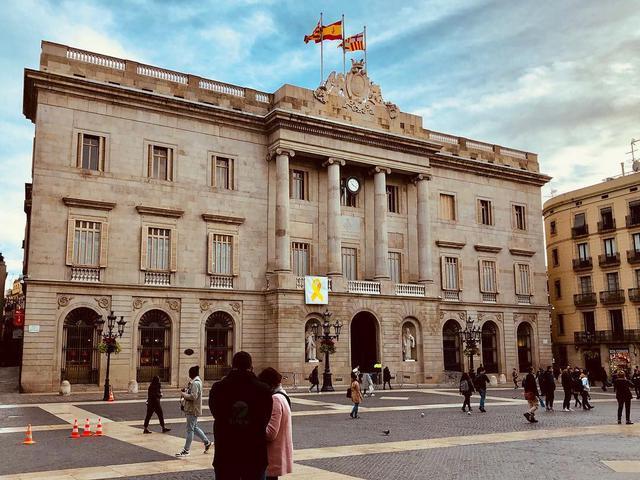City Hall and Palau de la Generalitat

The headquarters of Barcelona City Council and the Palau de la Generalitat de Catalunya are located in Plaza Sant Jaume, in the Ciutat Vella district, in Barcelona. It is bounded by calle del Bisbe, calle de Sant Sever and calle de Sant Honorat. The Palau or palace, the seat of the government, has a building of medieval origin, framed by a Renaissance facade and Saint George mounted on his steed. The town hall exhibits neoclassical architecture.
In the ancient Roman city of Barcelona, Plaça Sant Jaume was the site of the Forum, the meeting place and stage for political debate. You could say that the square continues to fulfill the same role today, as it is flanked by the two political powers of Barcelona: the Barcelona City Council and the seat of the Catalan government, the Palau de la Generalitat de Catalunya. Historically speaking, the city's first form of government was the Consell de Cent, or Council of One Hundred, which met in the Great Hall, the Saló de Cent, from 1373 until its dissolution in 1714. The building of the city. The hall began in 1369, while the Palace was acquired in 1400 by the General Council of Catalonia. The current structure actually predates its use as a government headquarters and had to adapt to its new functions with construction and renovations from the early 15th century to the mid-17th century. It has Gothic elements, such as its central patio with a large staircase and galleries that surround it. The original façade of the building, facing Calle del Bisbe, was also built in an extravagant Gothic style, as was the Sant Jordi chapel. Its most recent remodeling in 1928 gave it its current appearance.
The seat of the palace belonged to the Catalan Jewish poet Moixé Natán until the dismissal of the Jews in 1391. In both buildings, the oldest Gothic facades can be seen and, if it is a Christmas season, a Nativity scene or manger is displayed in the plaza, commissioned from some contemporary plastic artist. The Palau de la Generalitat is one of the most valued symbols of Catalonia, among other reasons because it has managed to survive so many historical and political disasters. Furthermore, it has come to represent, together with the Palau del Parlament, a bastion of democracy in Catalonia.
© Tourblink